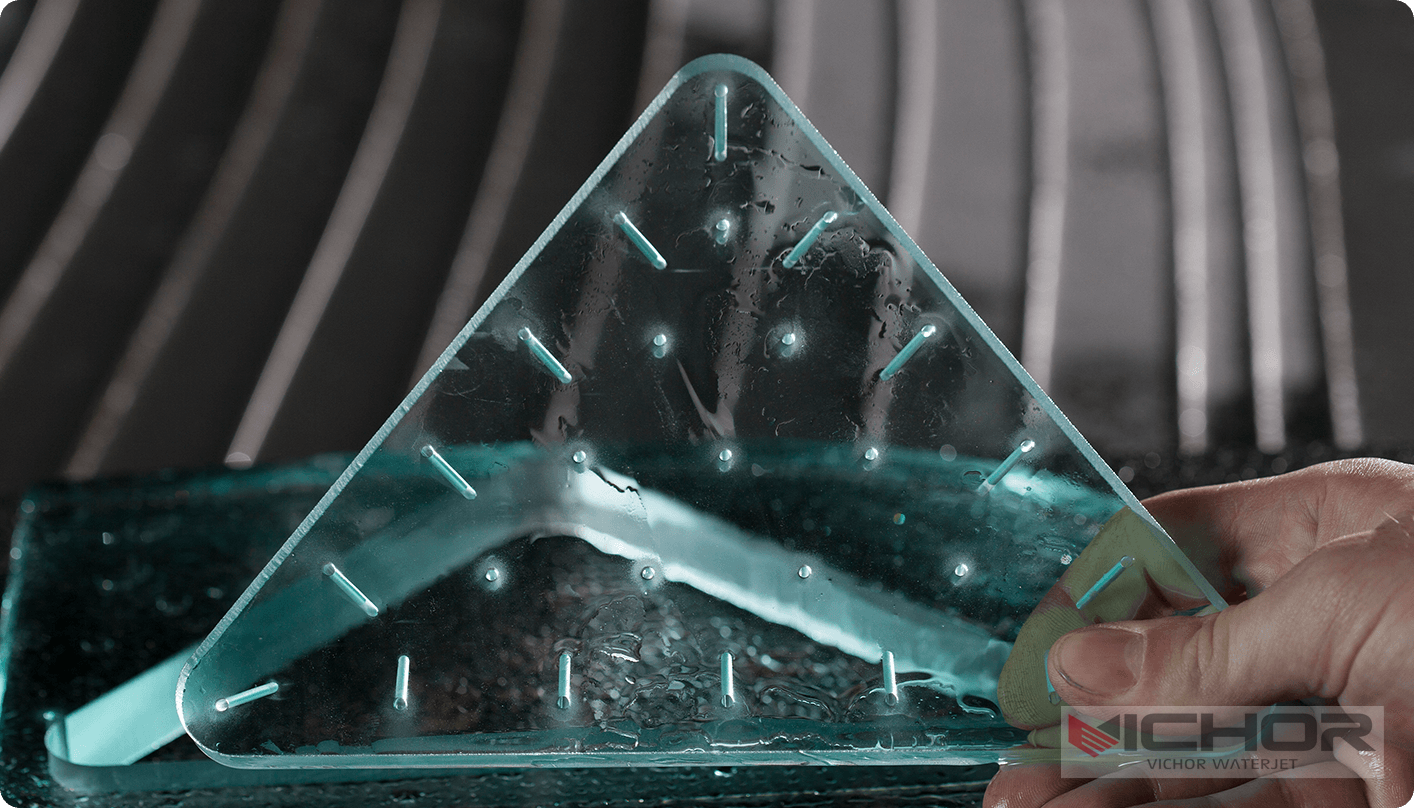
Waterjet Cutting Machine for Food Industry: The Ultimate Guide to Hygienic and Efficient Food Processing
In today’s competitive food industry, precision, efficiency, and hygiene are paramount. One technology that has revolutionized food processing is the waterjet cutting machine for the food industry. This innovative equipment uses high-pressure water jets to slice through various food products with unmatched accuracy, minimizing waste and ensuring product integrity. Whether you’re handling delicate pastries or tough meats, a waterjet cutting machine offers a versatile solution that adapts to diverse production needs. As food safety regulations tighten and consumer demand for quality rises, investing in the right cutting technology can set your business apart. This comprehensive guide delves into everything you need to know about waterjet cutting machines, from core functionalities to cost considerations, helping you make an informed decision for your operations.
Understanding Waterjet Cutting Technology and Its Advantages
A waterjet cutting machine for the food industry operates by propelling water at extremely high pressures—often exceeding 60,000 psi—through a narrow nozzle to cut materials. In food applications, this process is typically pure waterjet cutting, meaning no abrasives are added, ensuring no contamination. The technology stands out for its cold-cutting process, which prevents heat-affected zones that can alter food texture, flavor, or nutritional value. Compared to traditional methods like blade cutting or laser cutting, a waterjet cutting machine offers superior hygiene, as it easily sanitizes and reduces cross-contamination risks. For instance, while blades can harbor bacteria and require frequent sharpening, waterjets provide a consistent, sterile cut that complies with food safety standards like HACCP and FDA guidelines. This makes the waterjet cutting machine for the food industry an ideal choice for processing items like fruits, vegetables, meats, and baked goods, where precision and cleanliness are critical.
Comparing Waterjet Cutting with Other Food Cutting Methods
When evaluating cutting technologies for food processing, it’s essential to compare the waterjet cutting machine for the food industry with alternatives such as mechanical blades, lasers, and ultrasonic cutters. Mechanical blades, though cost-effective, often lead to product deformation, increased waste, and higher maintenance due to wear and tear. Laser cutting, while precise, generates heat that can cook or denature sensitive foods, affecting quality. In contrast, a waterjet cutting machine maintains food integrity by using cold water, preserving freshness and extending shelf life. Additionally, waterjets excel in versatility—they can handle a wide range of textures, from soft cheeses to frozen meats, without tool changes. This flexibility reduces downtime and enhances productivity. For businesses aiming to scale, the waterjet cutting machine for the food industry offers automation capabilities, integrating seamlessly with conveyor systems for high-volume processing. By choosing this technology, you invest in a solution that balances efficiency, safety, and adaptability, outperforming many conventional methods.
Key Applications of Waterjet Cutting in the Food Sector
The applications of a waterjet cutting machine for the food industry are vast and varied, spanning multiple segments of food production. In meat processing, for example, waterjets precisely portion cuts like steaks or poultry, reducing bone dust and ensuring uniform sizes for packaging. For bakery and confectionery, these machines delicately slice cakes, bread, or candies without crushing, maintaining aesthetic appeal. In the produce sector, waterjets handle everything from leafy greens to root vegetables, enabling efficient dicing, slicing, and shredding. Another growing area is ready-to-eat meals, where a waterjet cutting machine portions ingredients consistently, supporting meal kit services and frozen food lines. Moreover, the technology is invaluable for creating intricate designs, such as custom-shaped cookies or patterned cheese platters, catering to gourmet and artisanal markets. By leveraging a waterjet cutting machine for the food industry, businesses can achieve higher yields, reduce labor costs, and meet evolving consumer preferences for minimally processed, high-quality foods.
How to Select the Right Waterjet Cutting Machine for Your Needs
Choosing the appropriate waterjet cutting machine for the food industry involves several factors to ensure it aligns with your production goals. First, consider the types of foods you process—softer items may require lower pressure settings, while harder foods like frozen products might need higher capabilities. Look for machines with hygienic designs, such as stainless steel components and easy-clean surfaces, to comply with food safety standards. The size and throughput of your operation also matter; smaller businesses might opt for compact models, whereas large-scale facilities may require industrial-grade systems with automation features. Additionally, evaluate the machine’s precision and speed—advanced models offer CNC controls for complex cuts and high-speed operations. When selecting a waterjet cutting machine for the food industry, also assess the total cost of ownership, including maintenance, water consumption, and energy use. Consulting with suppliers who specialize in food-grade equipment can provide tailored recommendations, ensuring you invest in a solution that boosts efficiency without compromising on quality.

Finding Reliable Suppliers and Commercial Services
Sourcing a high-quality waterjet cutting machine for the food industry requires careful vendor evaluation to guarantee reliability and support. Start by researching manufacturers and distributors with proven experience in food processing equipment. Look for companies that offer comprehensive services, including installation, training, and after-sales support, as these are crucial for seamless integration into your workflow. Attend industry trade shows or explore online B2B platforms to compare offerings and read customer reviews. When engaging with suppliers, inquire about customization options—many providers can tailor a waterjet cutting machine to your specific food applications, such as adding specialized nozzles or sanitation features. It’s also wise to request demonstrations or case studies showcasing their machines in action within the food sector. By building a partnership with a reputable supplier, you ensure access to technical expertise and spare parts, minimizing downtime and maximizing the lifespan of your waterjet cutting machine for the food industry.
Cost Analysis and Pricing Considerations
The cost of a waterjet cutting machine for the food industry varies widely based on factors like size, capabilities, and automation level. Entry-level models may start from $50,000, while high-end systems with advanced features can exceed $200,000. Beyond the initial purchase, consider operational expenses such as water filtration, pump maintenance, and energy consumption, which can impact your overall budget. However, the return on investment (ROI) is often substantial due to reduced waste, lower labor costs, and increased production speed. For example, by minimizing product loss through precise cutting, a waterjet cutting machine for the food industry can pay for itself within a few years. Leasing or financing options may also be available, making it accessible for small to medium enterprises. When budgeting, factor in potential savings from extended food shelf life and compliance with safety regulations, which can prevent costly recalls. Ultimately, a thorough cost-benefit analysis will help you determine the right investment for your business needs.
Technical Insights into Waterjet Cutting Processes
Delving deeper into the technology, a waterjet cutting machine for the food industry relies on high-pressure pumps—typically intensifier or direct-drive types—to generate the water stream. The process involves filtering and pressurizing water to extreme levels, then directing it through a gemstone nozzle for precise cuts. In food applications, the absence of abrasives ensures no foreign particles enter the product, upholding purity. Advanced systems incorporate sanitization cycles using food-grade disinfectants, further enhancing safety. The cutting head can be programmed via software for intricate patterns, allowing for customization in portion control or branding. Moreover, the technology supports sustainable practices by using recyclable water and reducing chemical usage compared to other methods. Understanding these technical aspects empowers users to optimize their waterjet cutting machine for the food industry, adjusting parameters like pressure and traverse speed for different food types. This knowledge also aids in troubleshooting common issues, such as nozzle wear or pressure drops, ensuring consistent performance.
Frequently Asked Questions About Waterjet Cutting Machines
Q1: What makes a waterjet cutting machine suitable for the food industry?
A1: A waterjet cutting machine is ideal for the food industry due to its cold-cutting process, which preserves food quality, and its hygienic design that minimizes contamination risks. It handles a wide variety of foods without altering taste or texture.
Q2: How does a waterjet cutting machine ensure food safety?
A2: These machines use pure water without abrasives, and their components are often made from food-grade materials like stainless steel. Regular sanitization cycles and easy-clean features help comply with food safety standards, reducing bacterial growth.
Q3: What types of foods can be processed with a waterjet cutting machine?
A3: Virtually any food product can be cut, including meats, fruits, vegetables, baked goods, and dairy. The machine adjusts pressure settings to handle delicate items like berries or tough ones like frozen fish.
Q4: What is the typical maintenance required for a waterjet cutting machine in food applications?
A4: Maintenance includes routine nozzle checks, pump inspections, and water system cleaning to prevent clogs. Following the manufacturer’s guidelines ensures longevity and consistent performance.
Q5: How does the cost of a waterjet cutting machine compare to other cutting technologies?
A5: While the initial investment may be higher than some traditional methods, waterjet machines offer lower long-term costs through reduced waste, minimal tool replacement, and higher efficiency, providing a better ROI for food businesses.
In conclusion, the waterjet cutting machine for the food industry represents a transformative technology that enhances precision, hygiene, and efficiency in food processing. By understanding its applications, costs, and technical nuances, you can leverage this tool to stay competitive and meet modern consumer demands.
continue reading
Related Posts
- 1925 words9.7 min read



